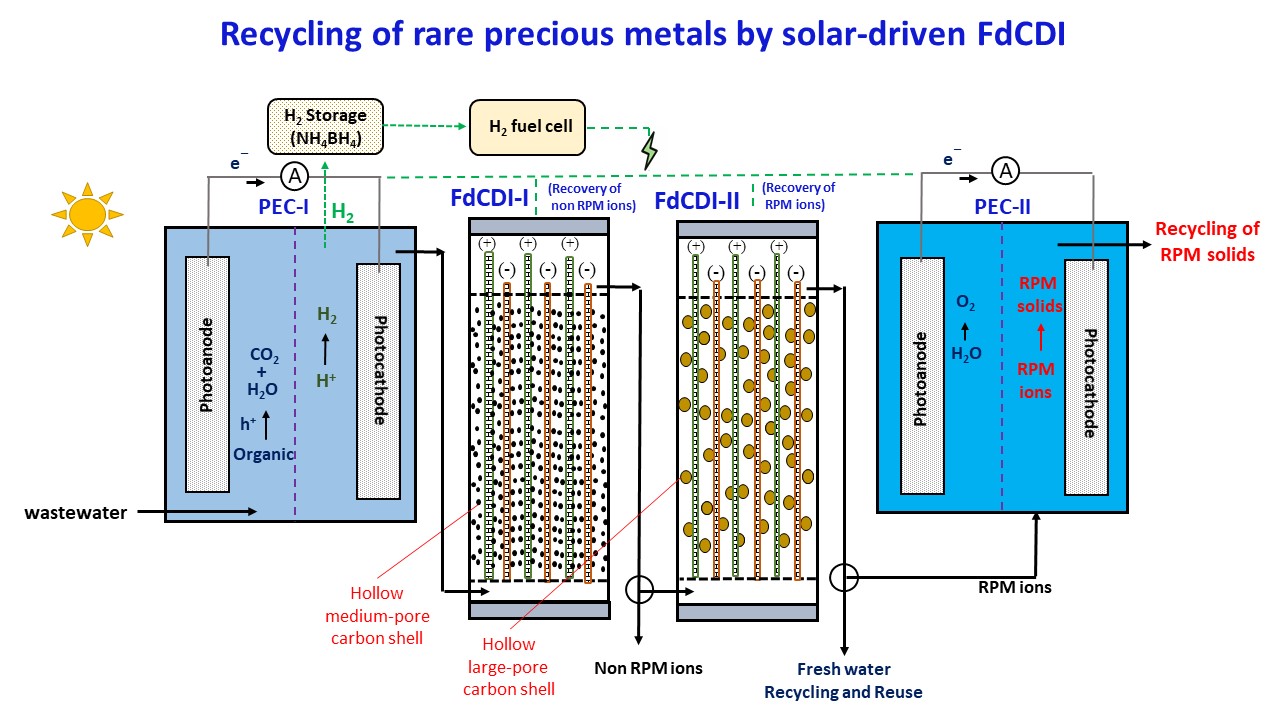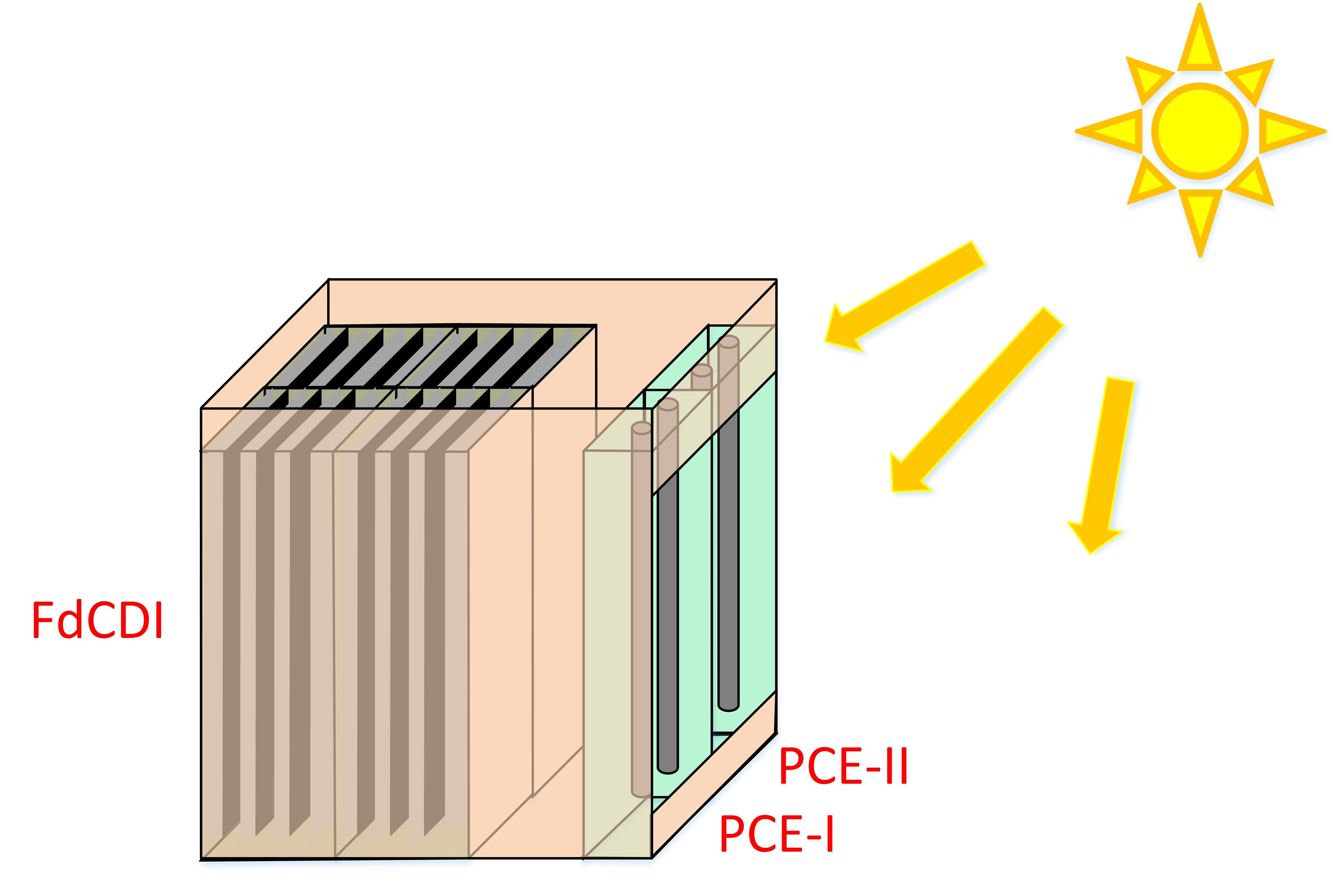| Technical Name | Solar-driven fluidized capacitive deionization method and equipment for recycling of rare precious metals | ||
|---|---|---|---|
| Project Operator | National Cheng Kung University | ||
| Project Host | 王鴻博 | ||
| Summary | Inorganic wastewater discharged from optoelectronic semiconductor, printed circuit board, and waste electronics recycling plants often contains rare precious metals (RPMs). We have developed a solar-driven fluidized capacitive deionization process for recycling of RPMs from inorganic wastewater. The key technologies include: (1) PCE-I: Solar-driven photoelectrolysis on the photoanode can generate electrons and hole, and h+ can oxidize organic pollutants to yield CO2and H2O. Electrons can be transferred to photocathode through external circuit to generate electricity and also decompose H2O to produce H2. H2 is enriched for a H2 fuel cell for electricity that can be used for the FdCDI; (2) FdCDI-I: Hm@C can be formed by etching copper from Cu@C. Electrodes can shape-selectively electrosorb and enrich the medium and small ions; (3) FdCDI-II: Hl@C can electrosorb and enrich the large ions; and (4) PCE-II: solar-driven photoelectric reduction of RPM ions and recycling of RPM solids. |
||
| Scientific Breakthrough | Solar-driven photoelectrolysis to generate electrons and hole on photoanode, and h+ can oxidize organic pollutants to generate CO2 and H2O; electrons can be transferred to photocathode through external circuit to generate electricity and also decompose H2O to produce H2. H2 is used as H2 fuel cell to generate electricity for the FdCDI. The hollow@C with large and medium pores are used for the fluidized electrodes. Solar energy was used to drive PEC-II to purify and recover RPM metals. |
||
| Industrial Applicability | The potential applications of FdCDI method in recycling of RPMs from inorganic wastewater include: |
||
| Keyword | Rare precious metals solar-driven fluidized electrode capacitive deionization recycling resource clean water environment friendly green procedure H2 generation organic pollutant | ||
- eugenet@mail.ncku.edu.tw
other people also saw







